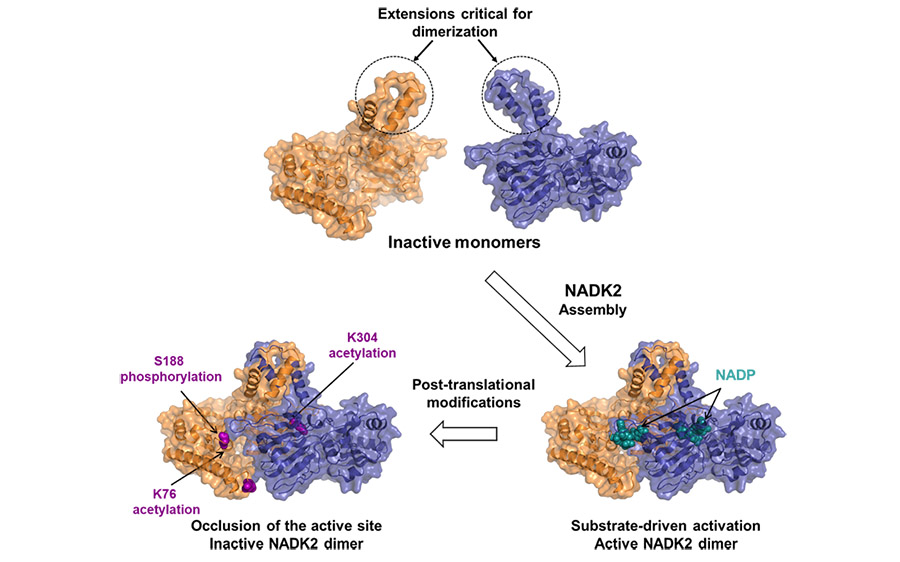NAD+ kinases (NADKs) are metabolite kinases that phosphorylate NAD+ molecules to make NADP+, a limiting substrate for the generation of reducing power NADPH. NADK2 sustains mitochondrial NADPH production that enables proline biosynthesis and antioxidant defense. However, its molecular architecture and mechanistic regulation remain undescribed. Here, we report the crystal structure of human NADK2, revealing a substrate-driven mode of activation. We find that NADK2 presents an unexpected dimeric organization instead of the typical tetrameric assemblage observed for other NADKs. A specific extended segment (aa 325–365) is crucial for NADK2 dimerization and activity. Moreover, we characterize numerous acetylation events, including those on Lys76 and Lys304, which reside near the active site and inhibit NADK2 activity without disrupting dimerization, thereby reducing mitochondrial NADP(H) production, proline synthesis, and cell growth. These findings reveal important molecular insight into the structure and regulation of a vital enzyme in mitochondrial NADPH and proline metabolism.

Charline Mary, Mona Hoseini Soflaee, Rushendhiran Kesavan, Muriel Gelin, Harrison Brown, Lauren G. Zacharias, Thomas P. Mathews, Andrew Lemoff, Corinne Lionne, Gilles Labesse* and Gerta Hoxhaj*
Full Text: https://doi.org/10.1016/j.molcel.2022.06.026

